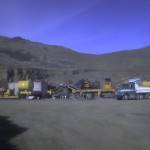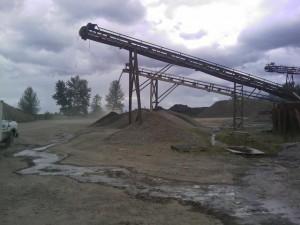Wed 1 Sep 2010
Silica & Noise at a Rock Crusher
Posted by admin under Mines, MSHA, Noise, Silica
[9] Comments
Industrial hygiene at a surface-mine rock crushing operation is primarily 2 major hazards: 1. airborne silica dust and 2. noise. (there are many more safety hazards but I will focus on IH)
Silica– this can vary due to: Â the amount of silica in the rock, weather conditions, type of equipment, if water is used, and where the miners work around the crusher. If it’s a dry-day the groundmen’s silica exposure is right at the limits. Operators in enclosed booths, and loader operators are usually within the limits, unless their cab doors are open. And, as a caveat, to all of this information: you HAVE to do your own monitoring. There are just too many variables.
Noise– with only a few exceptions, noise levels (dosimetry) are usually well above the MSHA Action limit of 85 dBA. Therefore most rock crushing operations need to have a hearing conservation program. – which for most companies is just measuring their employees hearing (audiogram) every year. I always recommend that these companies have an active program. Rock crushers are LOUD.
MSHA inspectors, in our state, usually come out to each of the surface rock crushing sites 2x/year. I think it is great they get as many “safety” visits as they do, however, I’ve heard many complaints about the inspectors. Most complaints stemming from silly citations that aren’t a safety issue, just a rule interpretation. But, to defend them, they have a hard job. They have to fly/drive all over the place, deal with miners, irritated owners, and make sure someone doesn’t get killed after they leave.
Mines (not just underground) can hurt people….but most people have seen that show on the news.
